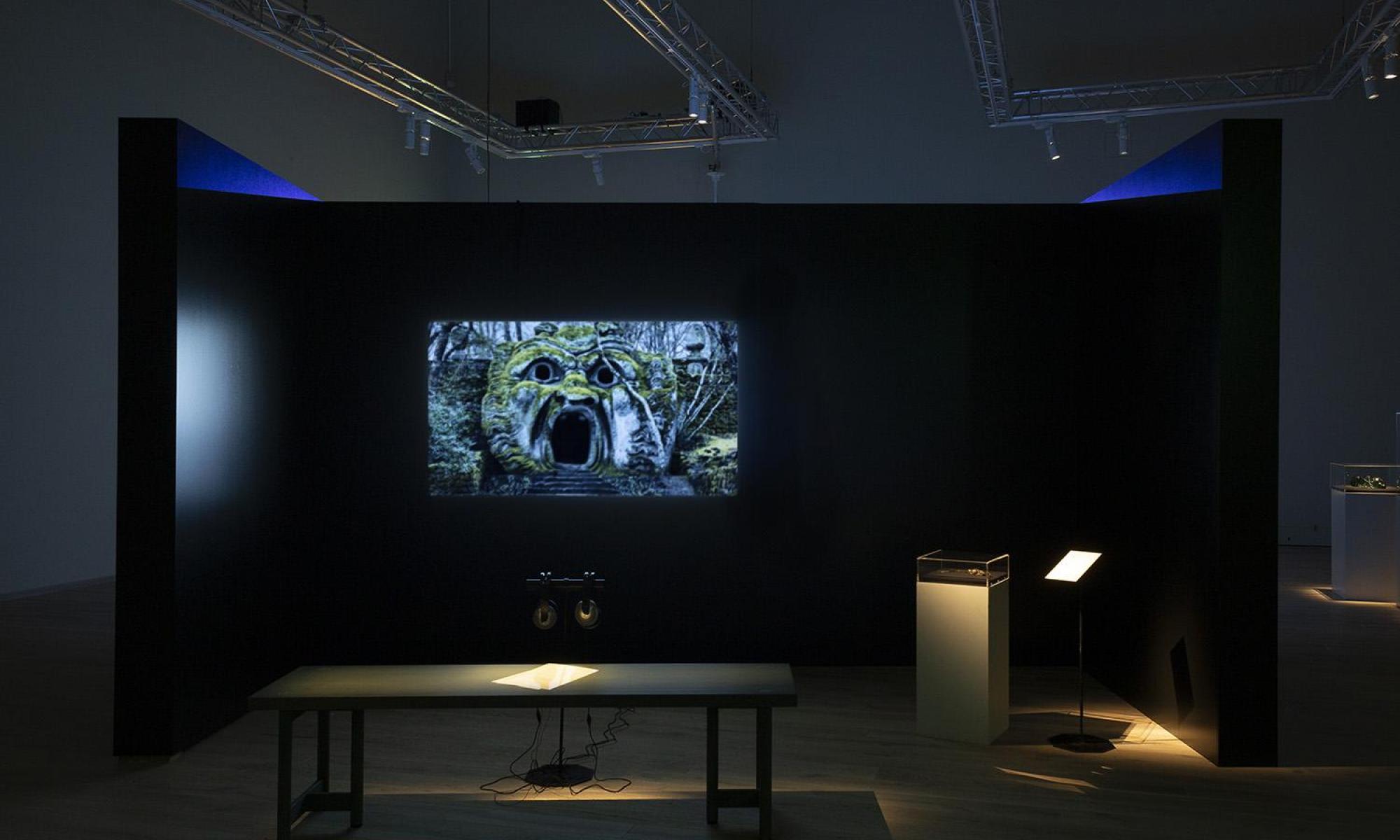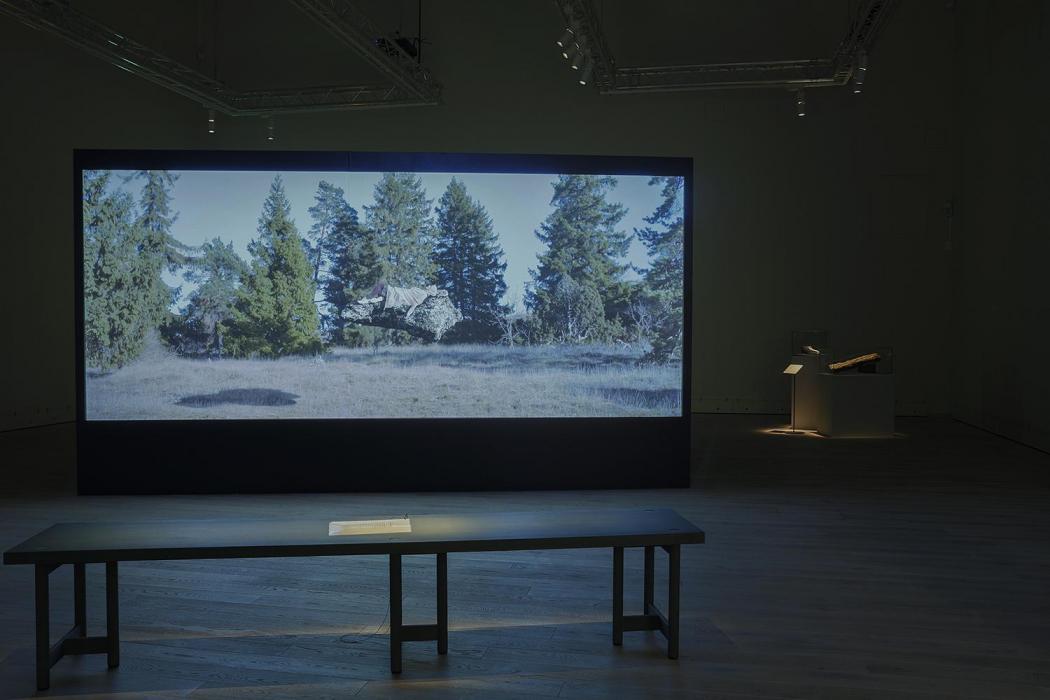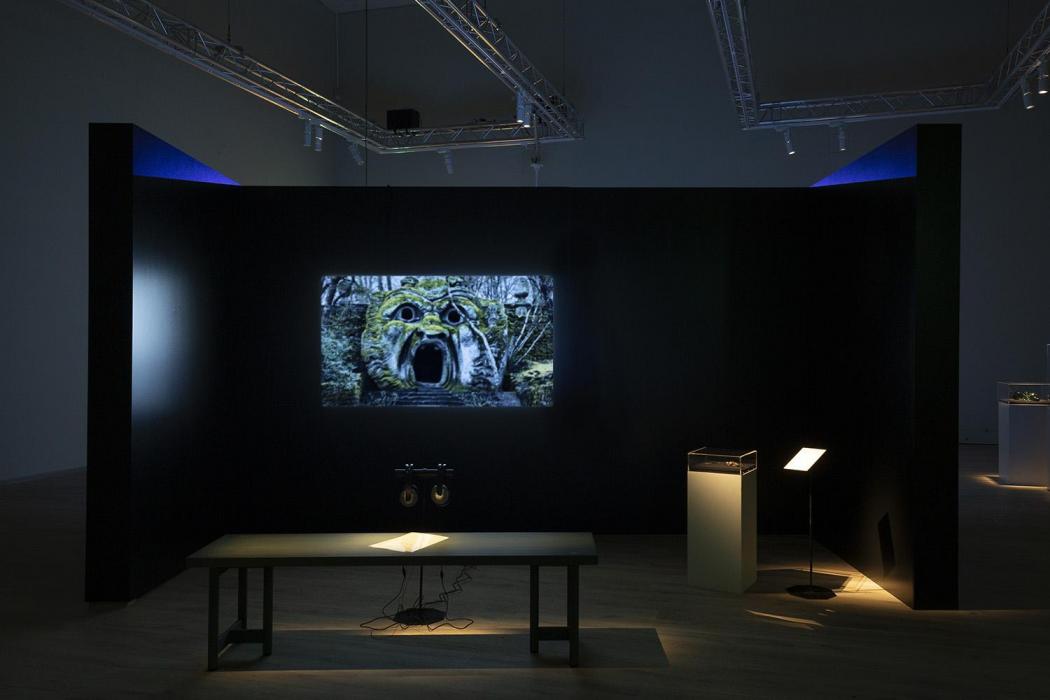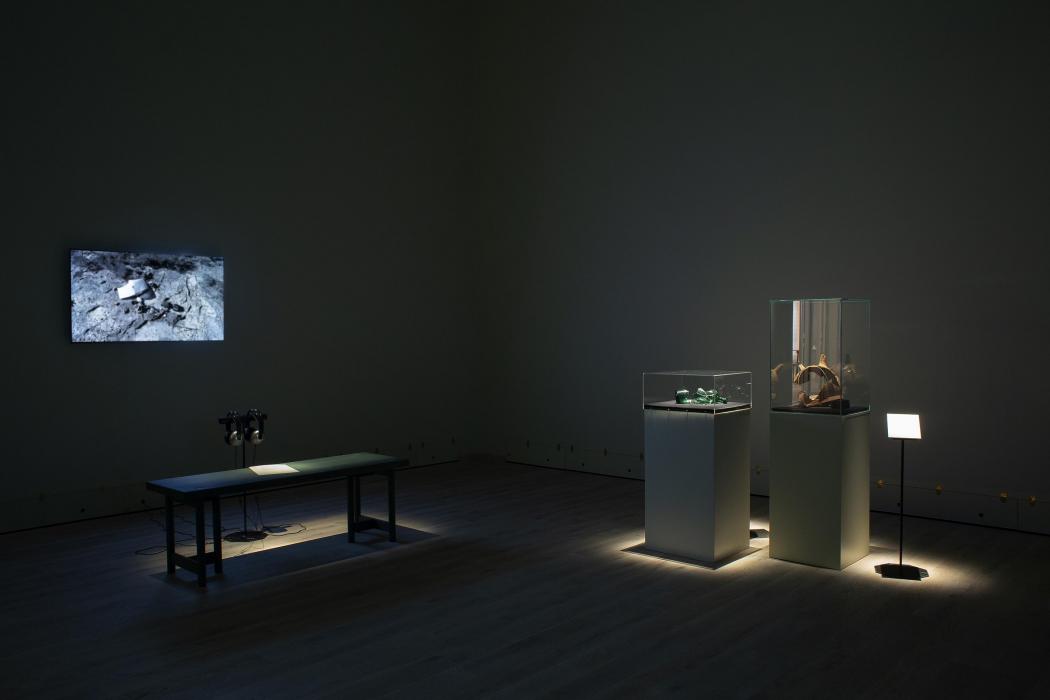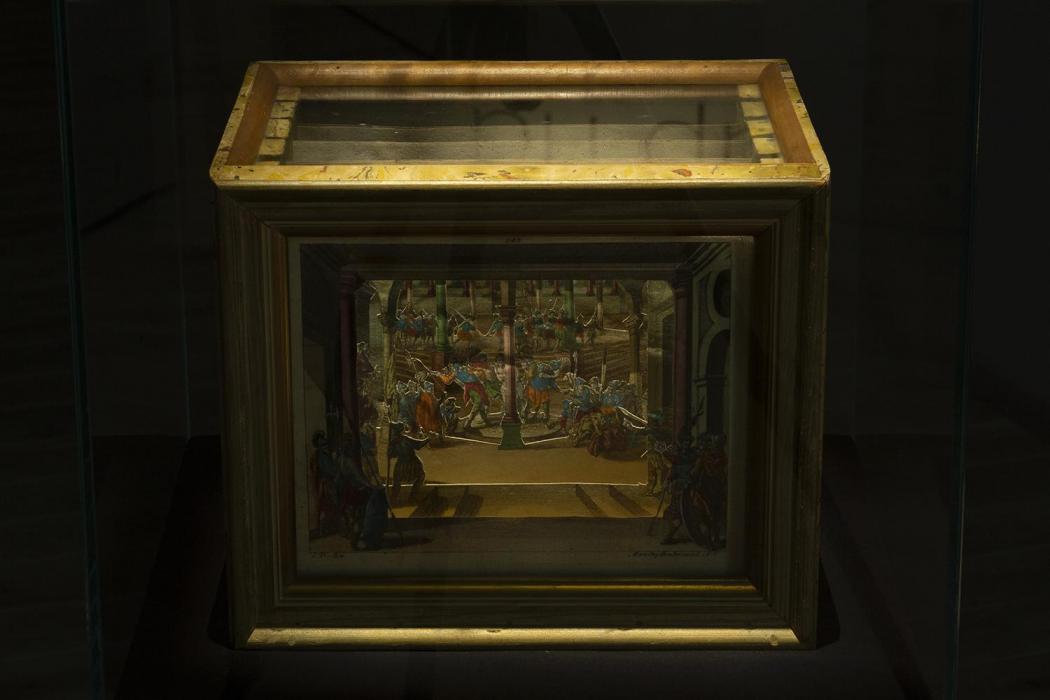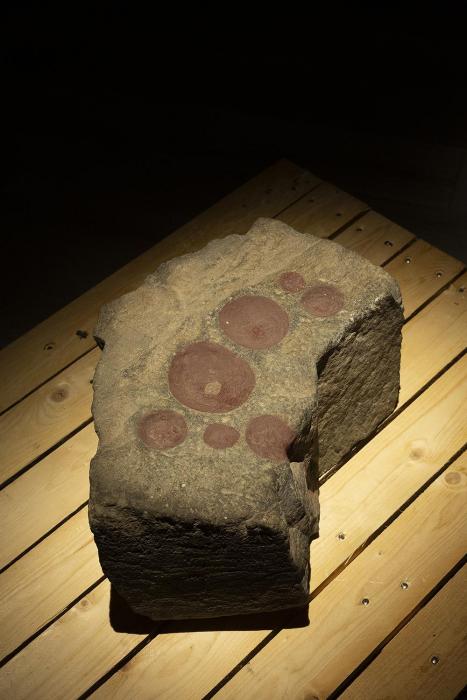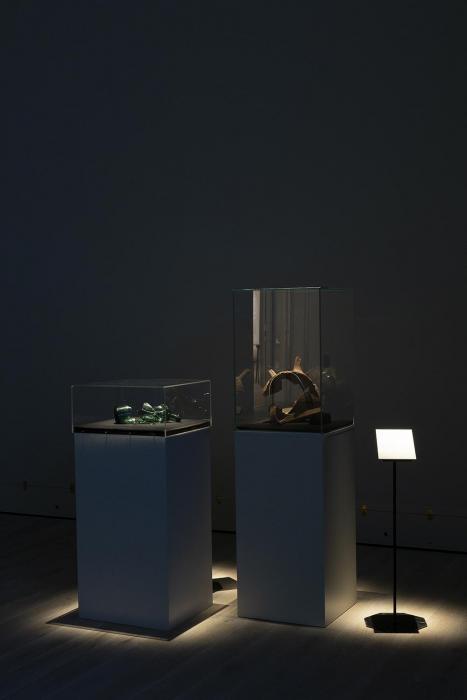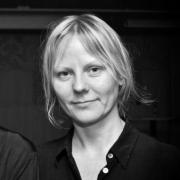Djup Tid
The exhibition Djup Tid (Deep Time) at Sörmlands museum, Nyköping, Sweden has a previous life. Already shown in a different setting at the Blue Mountain Cultural Centre (Within Deep Time: scratching the surface of the antipode, 25 May - 7 June, 2019), this move across the globe is the work of curatorial researchers Bronwyn Bailey-Charteris and Nina Stromqvist. At first glance it may seem like an unremarkable move; a simple exchange where the Swedish artworks are brought to Australia and exposed to new audiences and then vice-versa. But visiting the exhibition in Sweden, and seeing the artworks with the additional work of local curator Joanna Nordin, it becomes clear that this iterative approach represents something far more interesting than a mere exchange. It is a curatorial strategy that exposes and expands elements in each of the artworks included in the exhibition. In this move links are actively drawn between past and present, the notion of ‘here’ and ‘there’, between natural forces and human embodiment.
The exhibition is centered around three distinctly different film works. Most prominent in this version is the UK based Australian artist Sam Smith’s Lithic Choreographies from 2018. Produced at Baltic Art Center on the island of Gotland in Sweden, it draws on the unique island landscape of paleo-sea-stacks, fossil coastlines, concrete production plants and limestone quarries. Featuring filmed fragments from visits with local archeologists and fossil experts, as well as choreographed movement staged within the landscape, it draws attention to our different modes of engaging with earth; its minerals, its sculptural forms and its traces of geological time. A smaller monitor nearby shows The Grounding Ungrounding (2018) by Australian artists Haines & Hinterding. David Haines and Joyce Hinterding’s film is inspired by the novel Mount Analogue (1952) by Rene Daumal, which describes an allegorical mountain that can only be climbed from a certain angle. Daumal died during the novel’s completion, so the reader is left without a solution to the mystery of how to descend. As a response to this, the artists have filmed themselves climbing a mountain in a nature reserve in New South Wales, but have in the opening sequence inverted the image, so it instead looks like a strange sort of descent. With the help of contact microphones and home-made devices, they record subterranean vibrations and movements, as they move slowly through the rocky landscape, concentrated in their efforts to capture the cosmic sounds reverberating from the core of the earth. The soundtrack of the film, recorded on these devices, encourages a form of contemplative deep listening, a kind of ‘listening whilst searching’.
The third film, installed towards the back of the exhibition in a more intimate space is The Ceremony (2016) by Swedish artists Lina Selander and Oscar Mangione. These artists, who often work together, tend to work with a fragmented visual archaeology of different turning points in history. In a rhythmic flow of stills and filmed fragments, their work dwells on the points in history where one system breaks down and is replaced by another; where something collapses, becoming something else, and in the process leaves behind a kind of trauma of that collapse, along with the traces that remain of what was. The Ceremony starts with an image representing the Swedish scientist Olof Rudbeck as he tears back a piece of a map to reveal a mythical sunken land beneath Sweden: Atlantica. In the 1700s Rudbeck became convinced that Sweden was the geographical point of Atlantica’s location, and tried to demonstrate this. That the theory lacked scientific foundation or bearings to reality did not stop him from preaching his message. In The Ceremony Selander and Magione embrace Rudbeck’s attempt to shift the established order as they say ‘in the same audaciously unscientific way freed from reality’s hold’, [1] by weaving together layers of found footage (such as from Tutankhamen’s crypt, the grave of Caspar Hauser, the entrance to the old Stasi headquarters in Berlin) with their own short film clips of places such as the residential housing blocks of Stockholm’s 1960s suburb Bredäng. This layering creates a fragmented portrayal of previous times, histories and mythologies gathered from human experience.
This is a sparse and quiet exhibition, one that seems to set out to show us how to listen more attentively or in new ways, directing our attention inwards, backwards in time and towards the earth. The only sound we hear emerges softly from Sam Smiths film (the others are accessed via headphones). The exhibition is dark, partly lit by small spotlights that belong to a set of traditional museum vitrines, each containing a single historical object from the museum’s collection of local artefacts. Simple labels describe their content; a large key from the Viking Age, a bowl pit stone from the Bronze Age believed to have been used for magic/ritualistic purposes, a single worn shoe from Medieval Nyköping. Encountered in the present, these items expose trajectories back into time, and to the precise point where we are now. Situating the exhibition within an active museum housing a collection of local objects and cultural artefacts, creates intimate echoes between the immediate history of this place and the deeper layers of geographical time addressed in the film-works; these objects here have been held by the earth, contained deep in its sediments until their rediscovery in modern times.
The exhibition manages to establish a felt notion of the concept of ‘deep time’, through a particularly careful and understated layering works and artefacts all pointing towards the earth and geology in different ways. It stretches our imagination downwards into the earth and backwards into historical time. Its digging out of fragments that stare back at us blankly, their actual significance now forever hidden to us, gestures towards something deep yet unknown; we are confronted with our own need for connection and clarity but instead of traditional explanations we are offered a view of progress that only spirals back into the earth, deeper into the great mystery of time. With it comes the paradox of feeling insignificant and at the same time strangely significant as temporary guardians of this immense and mysterious resource; the earth. The movements of these artworks demonstrate patience for the unknown, as if the need to hear the echoes from our planet’s past has become larger and more urgent than ever. This version of the exhibition has managed to elegantly convey a very current need for a deeper sense of time, history and connection to our earth - as an alternative to the familiar incessant rush ahead, the clear definitions and concept of progress characteristic of Modernity. Through the artworks, we glimpse the agency of the earth anew, its sediments, its layers that affect us, as a force that we need to tune into more.
It is rare to see a convincing curatorial strategy that can create and convey a continuous expansion of the potential of the same artworks into different constellations and contexts. This strategy for ongoing dialogue—between the co-curators and artists, the artworks and museum objects— that expands over time and geographical locations is exciting. It feels new because it is not in a rush to define itself or the artworks it exhibits, but instead embraces the potential for continuous change. This elasticity feels refreshing; it lets go of the notion of the singular ‘super-curator’ or ‘star’ artist. Let’s hope for more of this style of curating; collaborative, inclusive, non-linear, its geographical and temporal locations expanded, yet respectful and attentive enough to maintain and reflect key concerns of the different artworks involved. Fingers crossed for a new installment of Deep Time sometime soon.
[1] Lina Selander 2016, linaselander.com, accessed 9 October 2019, <https://www.linaselander.com/works/the-ceremony>

